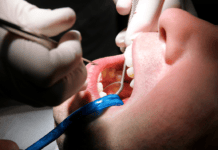Many dental professionals are aware of the risks associated with the use of e-cigarettes, including periodontal disease, oral infections, and increased risk of caries – not to mention the plethora of systemic health conditions associated with tobacco use.1,2 Therefore, you can imagine my surprise and disappointment when I recently discovered that the U.S. Food and Drug Administration (FDA) approved the marketing of four menthol-flavored e-cigarettes.3
This is the first time the FDA has authorized the marketing of any flavored e-cigarette product.3 This comes after years of public health groups urging the FDA to take action and ban menthol as a flavor for tobacco products.
The decision starkly contrasts previous stances made by the FDA on the use of menthol flavoring in tobacco products. In 2021, the acting FDA Commissioner, Janet Woodcock, MD, stated, “Banning menthol – the last allowable flavor – in cigarettes and banning all flavors in cigars will help save lives, particularly among those disproportionately affected by these deadly products.”4
Additional previous FDA decisions are also in contrast, such as the one handed down in 2023 when two menthol e-cigarette products were denied marketing due to the finding that they did not “meet public health standards.”5
When determining eligibility for marketing approval, the FDA evaluates the product’s components, ingredients, additives, constituents, design, harmful and potentially harmful constituents, health risks, and how the product is manufactured, packaged, and labeled. The FDA determined in the 2023 case that the “substantial risk concerning youth appeal” was too high to approve.5
In contrast, the current approval issued for the four menthol-flavored e-cigarettes indicates the evidence presented by the manufacturer for approval “showed that these menthol-flavored products provided a benefit for adults who smoke cigarettes relative to that of the applicant’s previously authorized tobacco-flavored products – in terms of complete switching – that is sufficient to outweigh the risks of the product, including youth appeal.”3
Why is this ruling a concern?
Public health officials have been fighting to ban menthol flavoring in the use of tobacco products for many years. Awareness of the increased risk of lung cancer associated with smoking and vaping is widespread.6 Lung cancer is often the most concerning condition associated with smoking and vaping, though many other oral and systemic conditions warrant concern as well.7,8
Nonetheless, many may be unfamiliar with the reasons why there has been a huge push to ban menthol flavoring.
Menthol Flavoring Targets Minority Communities
Marketing of menthol-flavored tobacco products is commonplace in racial or ethnic minority neighborhoods. Nationally, non-Hispanic Blacks or African American people are more likely to smoke menthol-flavored cigarettes, regardless of age, when compared to other races or ethnicities.9,10
In 2020, approximately 81% of non-Hispanic Black adults who currently smoked used menthol cigarettes.10 Smoking causes an increased risk of oral and systemic diseases, which only compounds the fact that certain ethnic populations, such as non-Hispanic Blacks and African Americans, are already at a disproportionately higher risk of developing periodontal disease, cardiovascular disease, and diabetes.11-13
As you can imagine, this targeted marketing poses serious health concerns for minority communities.
Menthol Flavoring Attracts Youth
Statistically, nearly all people who smoke start in adolescence or young adulthood. Adolescents and young adults are more likely to try menthol cigarettes as their first cigarette. Furthermore, those who start smoking with menthol cigarettes are more likely to continue smoking.10
Menthol flavoring also has been shown to increase the likelihood of becoming addicted as well as increase the degree of addiction.14
In 2023, over 40% of middle school and high school-aged youth who admitted to smoking used menthol cigarettes. Cigarettes are not the only popular menthol-flavored tobacco product used by adolescents. A 2023 report among middle school and high school-aged youth found:10
- 9% used menthol-flavored nicotine pouches
- 4% used menthol-flavored smokeless tobacco
- 4% used menthol-flavored e-cigarettes
- 5% used menthol-flavored cigars
Though fewer people smoke today than in the past, the proportion of people who use menthol-favored cigarettes has increased. The Centers for Disease Control and Prevention (CDC) found that nine in 10 youths who smoked used a flavored variety. In 2009, Congress banned flavoring in cigarettes but made an exception for menthol. Since then, the American Academy of Pediatrics (AAP) has urged the FDA to ban menthol from tobacco products on the market.15
The AAP has made a policy statement recommending that “the FDA regulate all tobacco and nicotine products to protect public health, which includes prohibiting all flavor ingredients, including menthol, in all tobacco and nicotine products.”15
Following the recent marketing approval, the AAP issued the following statement, “Given everything we know about how appealing flavored tobacco products are to children, the American Academy of Pediatrics is profoundly disappointed that the Food and Drug Administration has chosen to authorize several menthol-flavored e-cigarettes. Menthol is one of the most popular e-cigarette flavors among youth and has been shown to increase tobacco product initiation among children by masking the harshness of nicotine. These products have no place on the market.”16
Menthol Flavoring Hides Early Symptoms of Respiratory Diseases
When inhaled, menthol reduces airway/throat irritation and pain from cigarette smoke. Additionally, menthol suppresses coughing, which can give the illusion that breathing is not difficult despite the damage inhaling smoke and vapors from cigarettes and e-cigarettes cause to the airway.14
It has been proposed that menthol flavoring allows for deeper inhalation, which deposits harmful substances deeper into the lungs. Deeper inhalation may increase the risk of developing respiratory diseases.17 Additionally, the reduced airway irritation and cough suppression effect of menthol flavoring can mask early warning symptoms of respiratory problems.14
In Closing
The decision by the FDA to approve marketing for menthol-flavored e-cigarettes is disappointing. All health care professionals, including dental professionals, need to be aware of the risks associated with e-cigarettes. Not only does menthol flavoring increase the use of tobacco products, but it is also a barrier to tobacco cessation.
Statistically, this approval could increase e-cigarette use among adolescents and young adults. Therefore, dental professionals need to be prepared to discuss oral health risk factors associated with e-cigarette use with younger patients and their parents.
The CDC has highlighted e-cigarette cessation strategies. These strategies are evidence-based and scientifically proven to be effective, including counseling, medications (currently, there are seven FDA-approved medications for tobacco cessation), and counseling plus medication.18
Additionally, strategies for adolescents highlighted by the AAP include nicotine replacement therapy (NRT). The AAP guidance states, “For best results, patients should be advised to pair a long-acting form of NRT (e.g., nicotine patch) with a shorter-acting form (e.g., gum, lozenge, spray, or inhaler).”19 This needs to be managed by the patient’s pediatrician. However, it is helpful to know the strategies used to help encourage adolescents to seek help to quit smoking and vaping.
As a member of a patient’s health care team, dental professionals must understand strategies to help patients with tobacco cessation. Often, our role is limited, but we can help guide patients to resources that will help as they take on the task of quitting a very addicting habit. In addition to providing resources, encouraging and supporting the patient along this journey can be helpful in their success.
Before you leave, check out the Today’s RDH self-study CE courses. All courses are peer-reviewed and non-sponsored to focus solely on high-quality education. Click here now.
Listen to the Today’s RDH Dental Hygiene Podcast Below:
References
- Precker, M. (2020, August 26). Need Another Reason Not to Vape? Your Oral Health Is at Risk. American Heart Association. https://www.heart.org/en/news/2020/08/26/need-another-reason-not-to-vape-your-oral-health-is-at-risk
- Gaur, S., Agnihotri, R. The Role of Electronic Cigarettes in Dental Caries: A Scoping Review. Scientifica (Cairo). 2023; 2023: 9980011. https://www.ncbi.nlm.nih.gov/pmc/articles/PMC10482527/
- FDA Authorizes Marketing of Four Menthol-Flavored E-cigarette Products After Extensive Scientific Review. (2024, June 21). U.S. Food and Drug Administration. https://www.fda.gov/news-events/press-announcements/fda-authorizes-marketing-four-menthol-flavored-e-cigarette-products-after-extensive-scientific
- FDA Commits to Evidence-Based Action Aimed at Saving Lives and Preventing Future Generations of Smokers. (2021, April 29). U.S. Food and Drug Administration. https://www.fda.gov/news-events/press-announcements/fda-commits-evidence-based-actions-aimed-saving-lives-and-preventing-future-generations-smokers
- FDA Denies Marketing of Two Vuse Menthol E-cigarette Products Following Determination They Do Not Meet Public Health Standard. (2023, January 24). U.S. Food and Drug Administration. https://www.fda.gov/news-events/press-announcements/fda-denies-marketing-two-vuse-menthol-e-cigarette-products-following-determination-they-do-not-meet
- Lung Cancer and Vaping. (n.d.). Moffitt Cancer Center. https://www.moffitt.org/cancers/lung-cancer/faqs/lung-cancer-and-vaping/
- The Impact of E-cigarettes on the Lung. (2024, June 7). American Lung Association. https://www.lung.org/quit-smoking/e-cigarettes-vaping/impact-of-e-cigarettes-on-lung
- Health Effects of Vaping. (2024, May 15). Centers for Disease Control and Prevention. https://www.cdc.gov/tobacco/e-cigarettes/health-effects.html
- Tobacco Is Changing: Menthol. (2023, December 22). Wisconsin Department of Health Services. https://www.dhs.wisconsin.gov/tobaccoischanging/menthol.htm
- Menthol Smoking and Related Health Disparities. (2024, May 15). Centers for Disease Control and Prevention. https://www.cdc.gov/tobacco/menthol-tobacco/health-disparities.html
- Oral Health Disparities. (2007, July). Washington State Department of Health. https://doh.wa.gov/sites/default/files/legacy/Documents/Pubs/160-001-OralHlthBurdenDisparities.pdf
- Heart Disease and African Americans. (n.d.). U.S. Department of Health and Human Services Office of Minority Health. https://minorityhealth.hhs.gov/heart-disease-and-african-americans
- Diabetes and African Americans. (n.d.). U.S. Department of Health and Human Services Office of Minority Health. https://minorityhealth.hhs.gov/diabetes-and-african-americans
- What Is Menthol? (2024, June 11). American Lung Association. https://www.lung.org/quit-smoking/smoking-facts/health-effects/what-is-menthol
- Schering, S. (2023, December 7). AAP Calls for Swift Federal Ban on Menthol Cigarettes, Flavored Cigars to Protect Children. American Academy of Pediatrics. https://publications.aap.org/aapnews/news/27464/AAP-calls-for-swift-federal-ban-on-menthol
- Fitch, J. (2024, June 25). AAP President Responds to FDA’s Marketing Authorization of Menthol-Flavored E-Cigarettes. Contemporary Pediatrics. https://www.contemporarypediatrics.com/view/aap-president-responds-to-fda-s-marketing-authorization-of-menthol-flavored-e-cigarettes
- “Not Just a Flavoring:” Menthol and Nicotine, Combined, Desensitize Airway Receptors. (2014, November 16). Georgetown University Medical Center. https://gumc.georgetown.edu/news-release/not-just-a-flavoring-menthol-and-nicotine-combined-desensitize-airway-receptors/
- Adult Smoking Cessation – The Use of E-Cigarettes. (2023, October 25). Centers for Disease Control and Prevention. https://www.cdc.gov/tobacco/sgr/2020-smoking-cessation/fact-sheets/adult-smoking-cessation-e-cigarettes-use/index.html
- Nicotine Replacement Therapy and Adolescent Patients. (2024, May 7). American Academy of Pediatrics. https://www.aap.org/en/patient-care/tobacco-control-and-prevention/youth-tobacco-cessation/nicotine-replacement-therapy-and-adolescent-patients/











